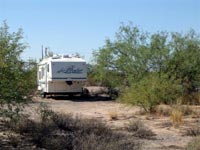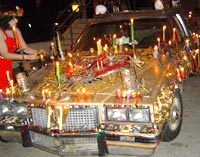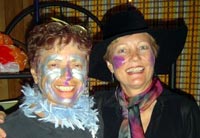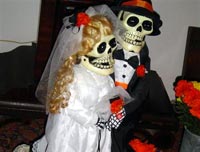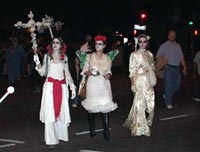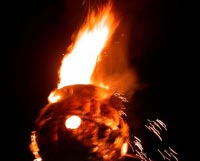| RoadTrip: Tucson, by Alice Zyetz |
|
THE ENERGY OF TUCSON
Tucson attracts people of many cultures. Starting with the earliest settlers-the Native Americans (Tohono O'Odham tribe), Spanish, Mexican, and American pioneers-the city continues to attract people of many cultures. The 17th Street market is a huge warehouse space packed with shelves jammed with foods and artifacts from India, Thailand, the British Isles, Italy, Japan, Mexico, and many other countries.
The daily newspaper devotes two pages to free and inexpensive concerts, lectures, meetings, dramatic presentations, storytelling, "improv" theater, Brazilian folk dancing, gardening, butterfly magic, woodcarving shows, and other arts and crafts. Among other activities, we attended a fundraiser for the local live theater. "Jerry Springer, the Opera" was not only "interesting," the singing was great.
DAY OF THE DEAD
Tucson's Indian and Mexican influences are ever present in the daily life of the city. Much of the architecture is Spanish pueblo style, and the name Tucson comes originally from the Tohono O'Odham language meaning "spring at the foot of black mountain." Early in November is the traditional Day of the Dead (El Día de los Muertos) celebration, originating with the Mexican and Indian custom of paying respect to dead relatives and friends. In Mexico, people build altars in their homes and decorate them with photographs and mementos of the departed along with paper cutouts, orange marigolds, sugar skulls, and various skeleton characters including brides and grooms. The families go to the cemetery to party and visit with the spirits who have returned. When the monarch butterflies return to Mexico in November, it is said that they bring the departed spirits with them.
In Tucson, the Day of the Dead is celebrated with various performances as well as a variety of artistic altars in museums and shops. One tradition is a huge parade, known as the All Souls Procession, made up of thousands of ordinary people who dress in Day of the Dead costumes. It's not unlike a giant Halloween parade of fanciful skeletons. Jaimie Hall and I visited with some of our RV friends, made our own altar, put on makeup and other doodads, and went to the parade. We had a rich time remembering our own loving family and friends who have left us. As is the custom, we also said goodbye to any old habits we wished to be rid of. At the conclusion of the parade everyone gathered as a giant urn created by local artist Paul Weir was filled with people's paper messages. It was then set on fire, lifted several stories high, and allowed to consume itself. We decided this would be an annual event for us.
BE A TOURIST [www.visittucson.org]
Tucson, located in a high desert valley surrounded by mountain ranges, offers activities for all interests. For nature lovers, the desert and mountains provide opportunities for walking, hiking, stargazing, birding, and sightseeing. The Sonora Desert Museum is an excellent resource for learning about the desert and features a unique hummingbird and prairie dog display. Tohono Chul Park is a 49-acre desert preserve located in the heart of the city. Saguaro National Park is located both east and west of Tucson. The Saguaro (suh-WAR-oh) is the familiar "Peanuts"-style cactus -- with arms jutting out -- that only grows naturally in Arizona and a few select spots in Mexico.
For baseball lovers, the World Series champs Chicago White Sox will be doing their Spring training in Tucson in March, 2006, along with the Arizona Diamondbacks and the Colorado Rockies. Golfing is perfect in the ever-present sunshine. Museum-goers have their pick of art, historical, and scientific museums. The old West is still accessible. Of course, there are plenty of restaurants, including Guatemalan, Indian, Ethiopian, lots of Mexican, and many others. Click here for galleries from the All Souls Procession and here for an amazing collection of art projects currently underway in the greater Tucson area.
WHERE TO STAY IN TUCSON
[www.go-arizona.com/Tucson/Camping]
Although we prefer to dry camp in a more primitive setting,
there are numerous RV parks and campgrounds within the city
limits. RVers can often stay for extended periods in mobile
home parks. For all others, there are
hotels and motels throughout the city.
Alice Zyetz
12/4/05

